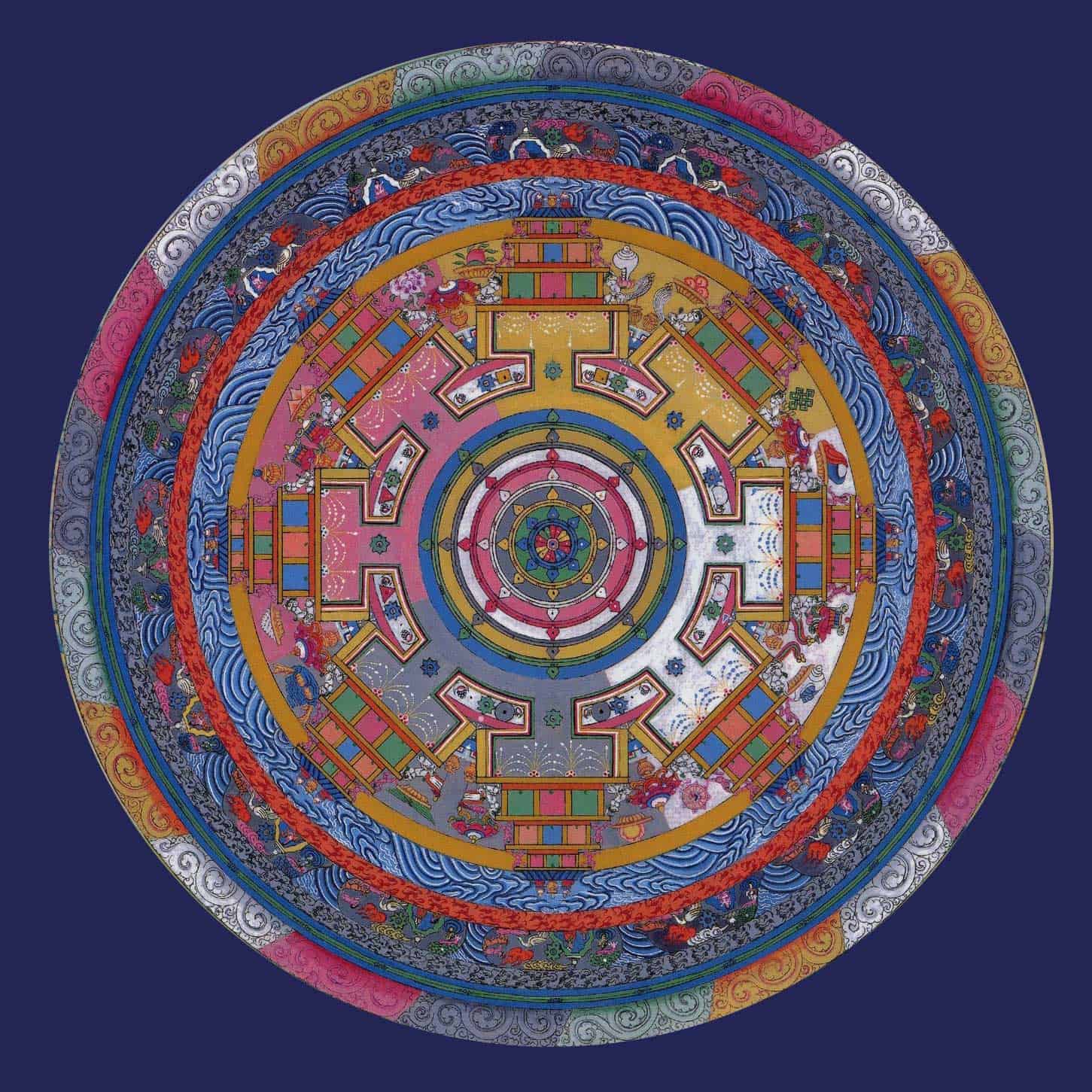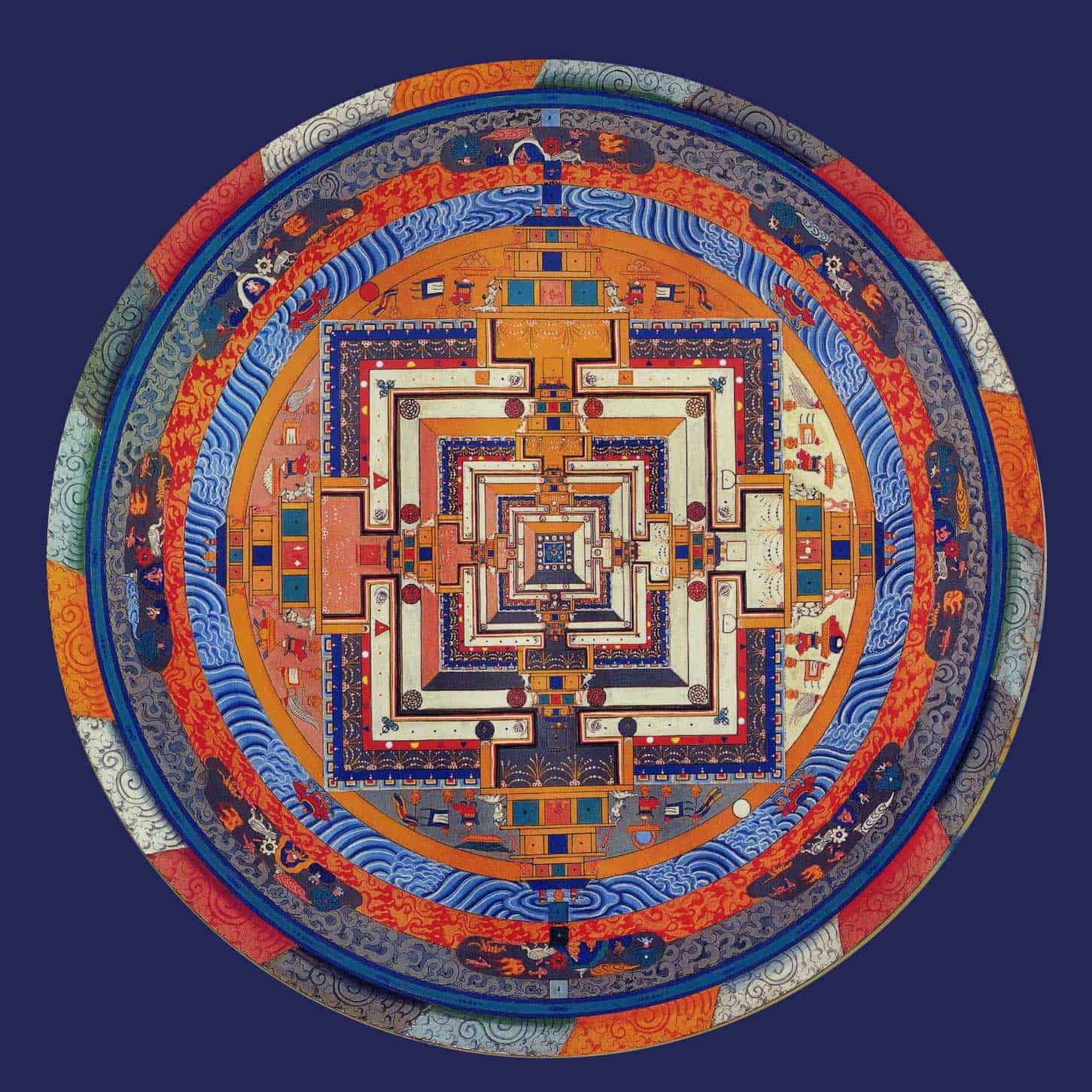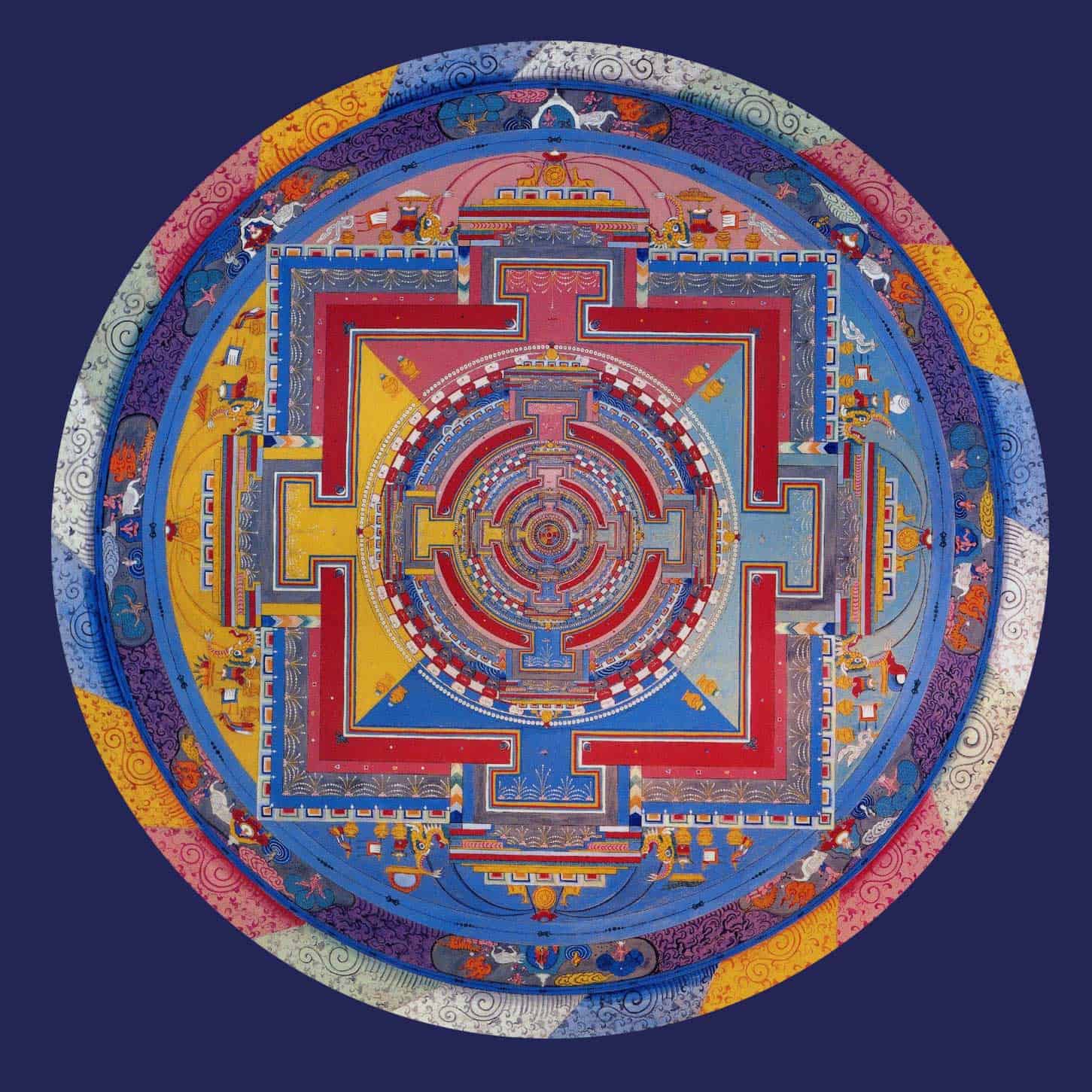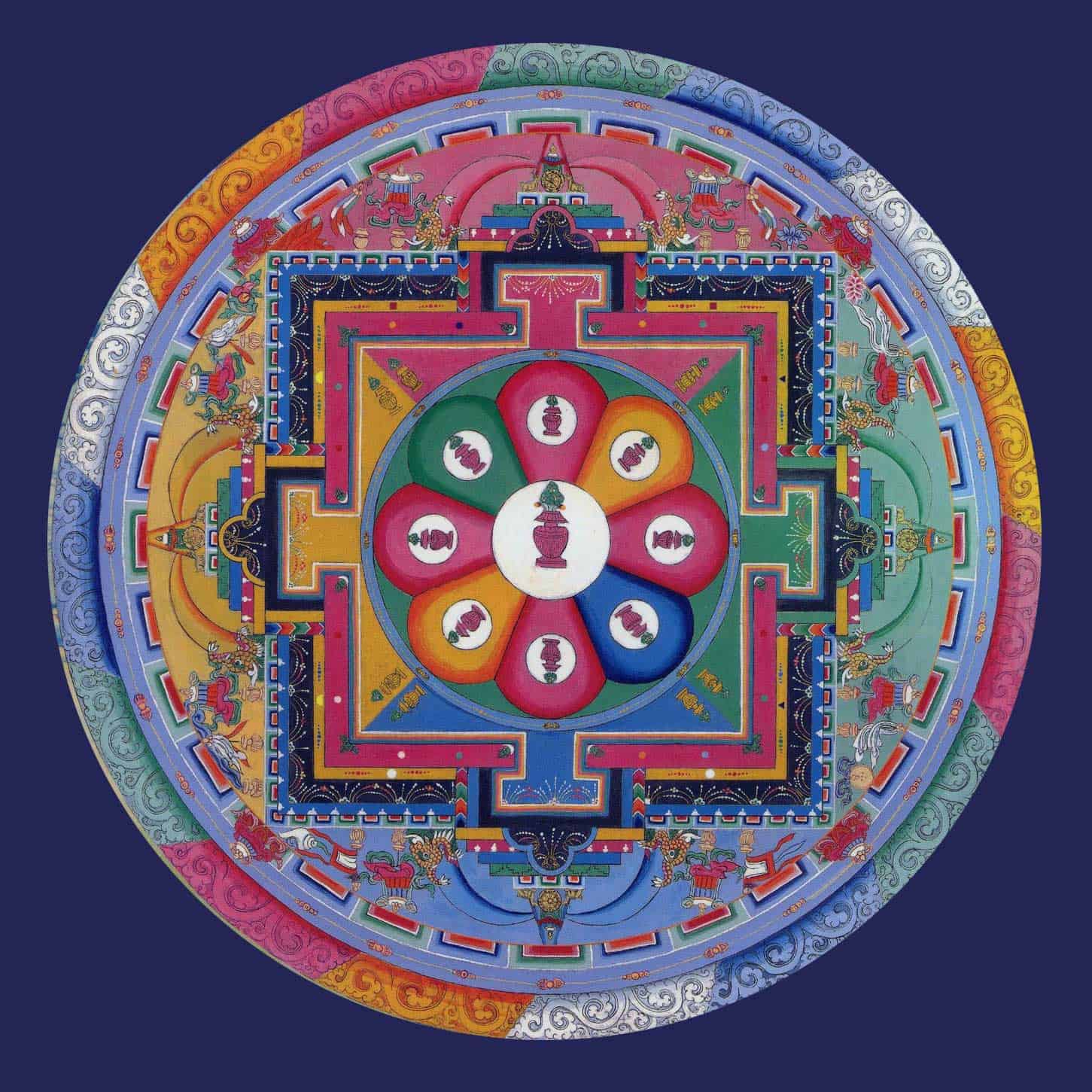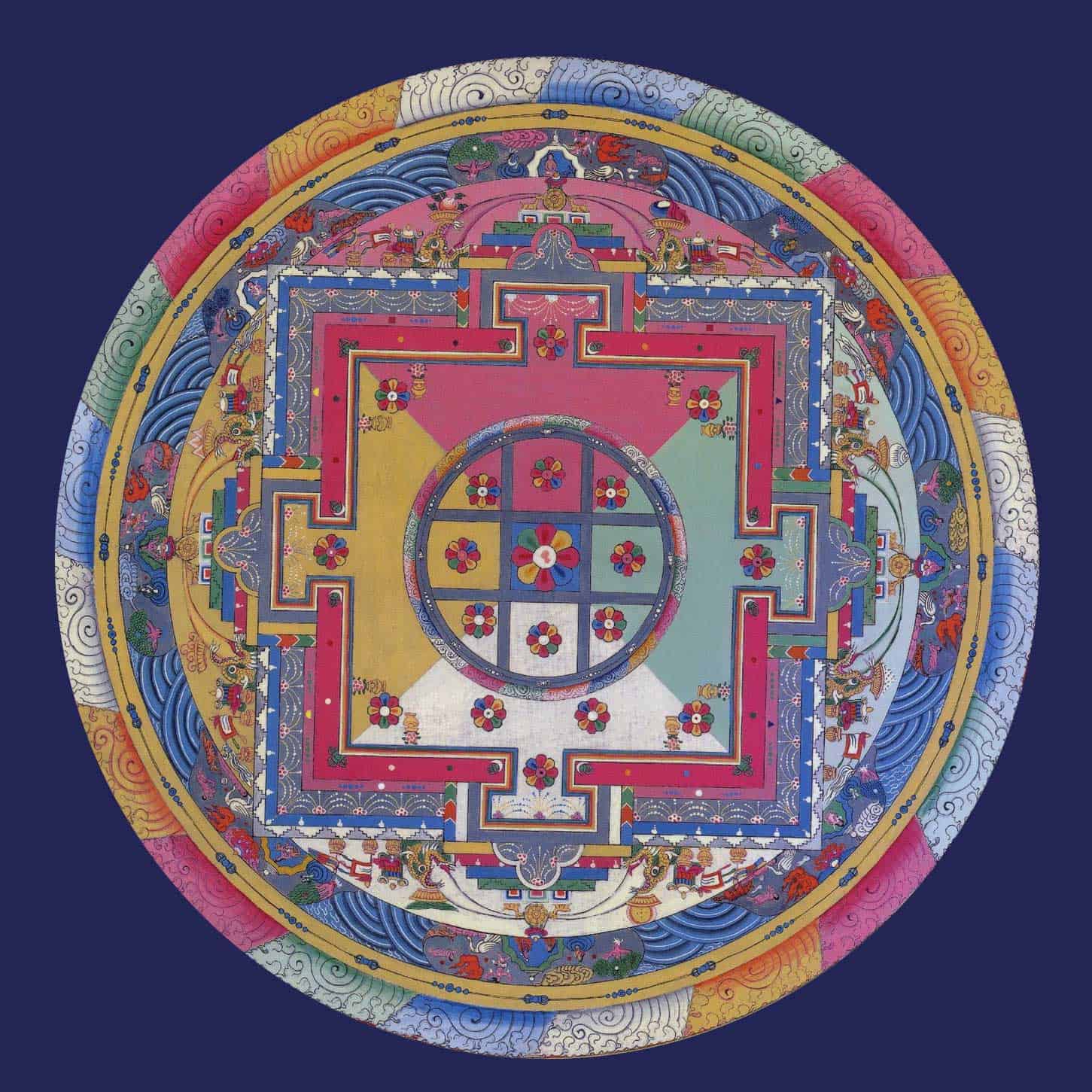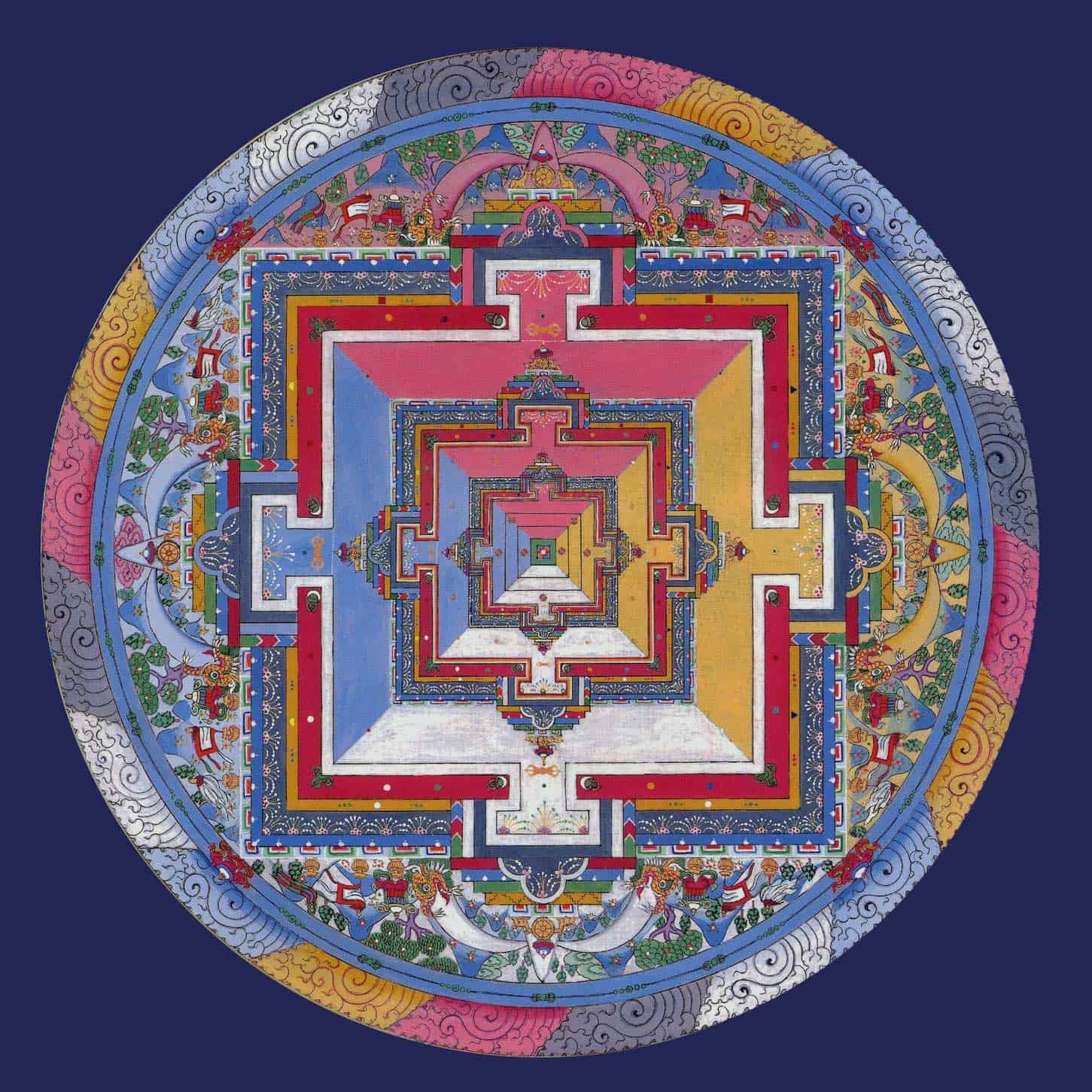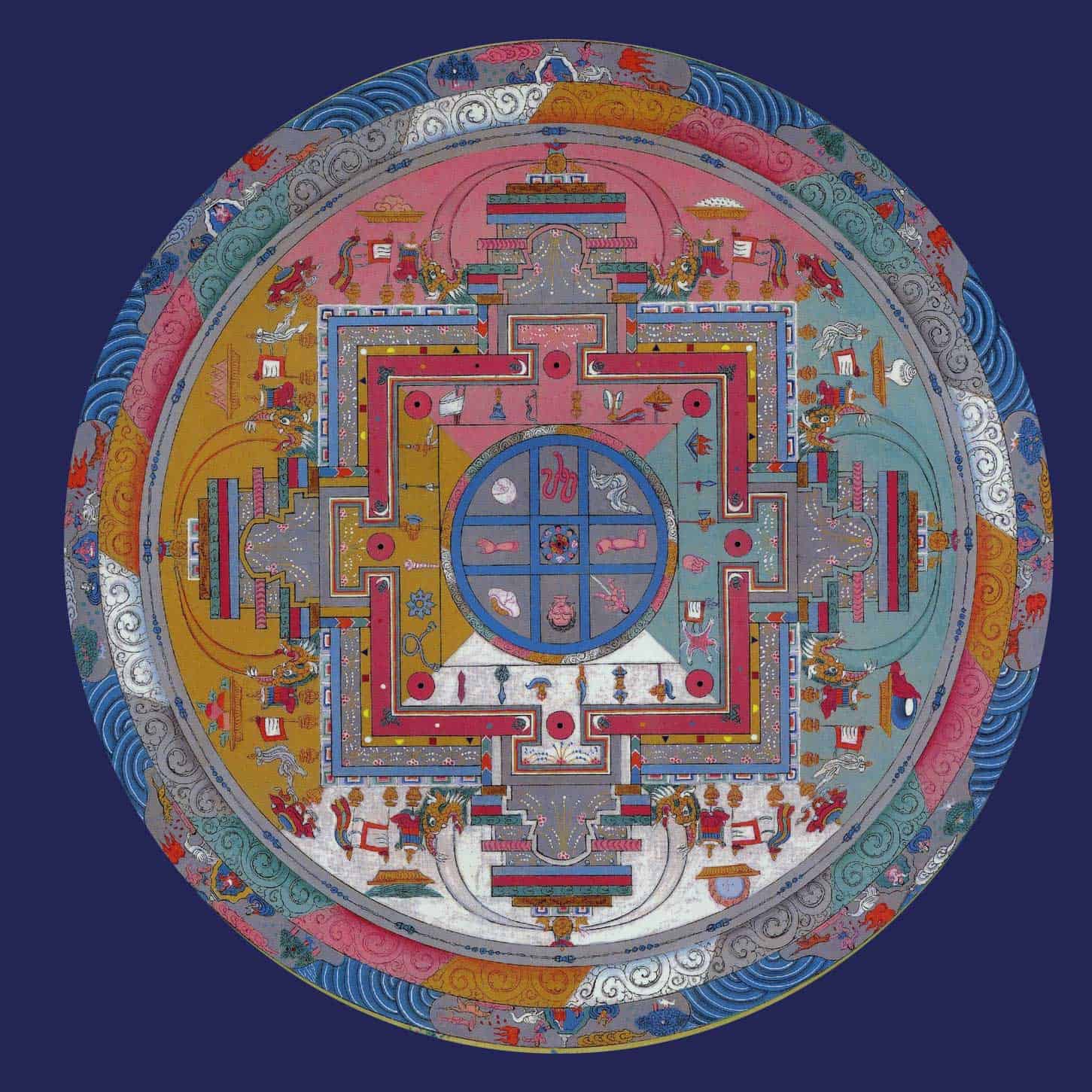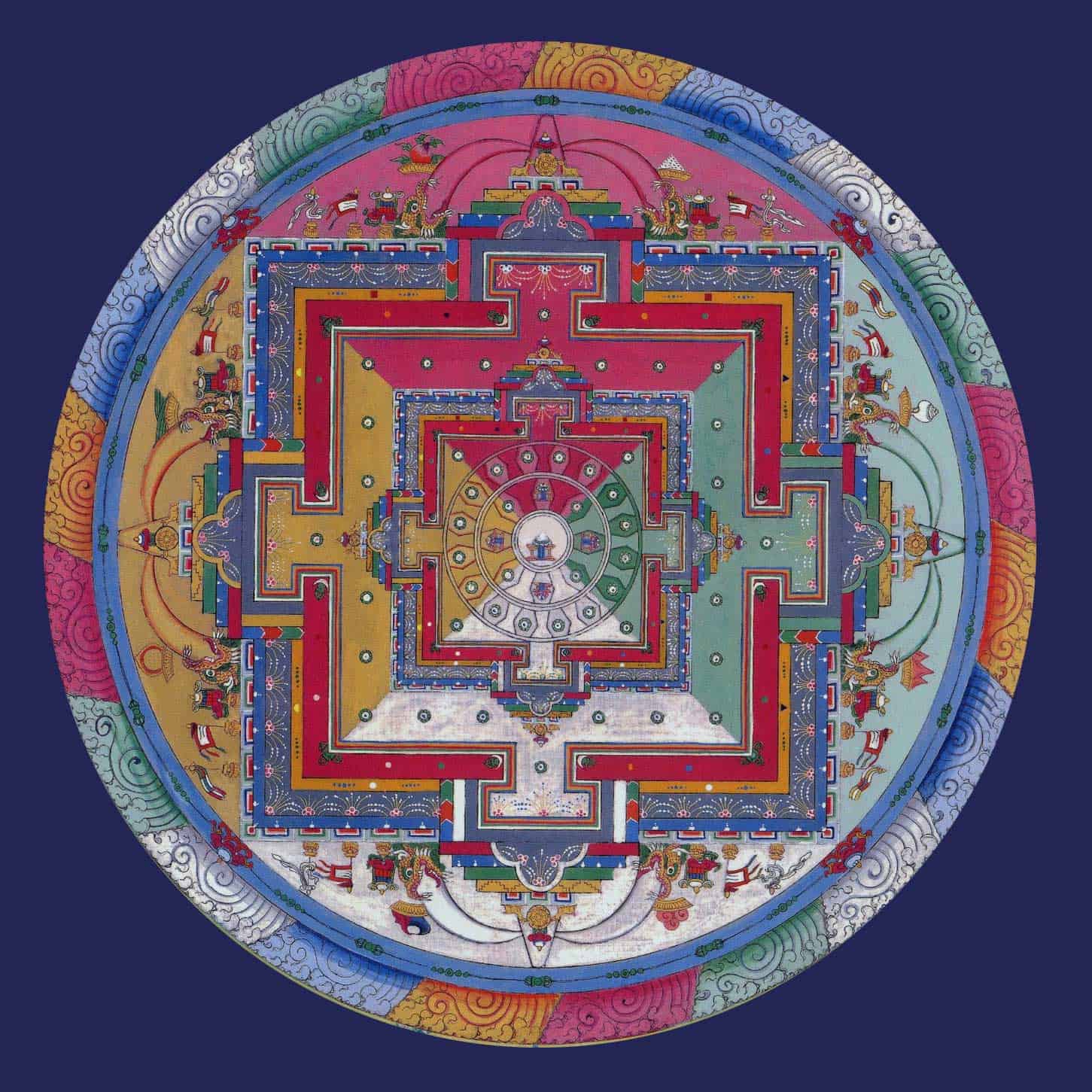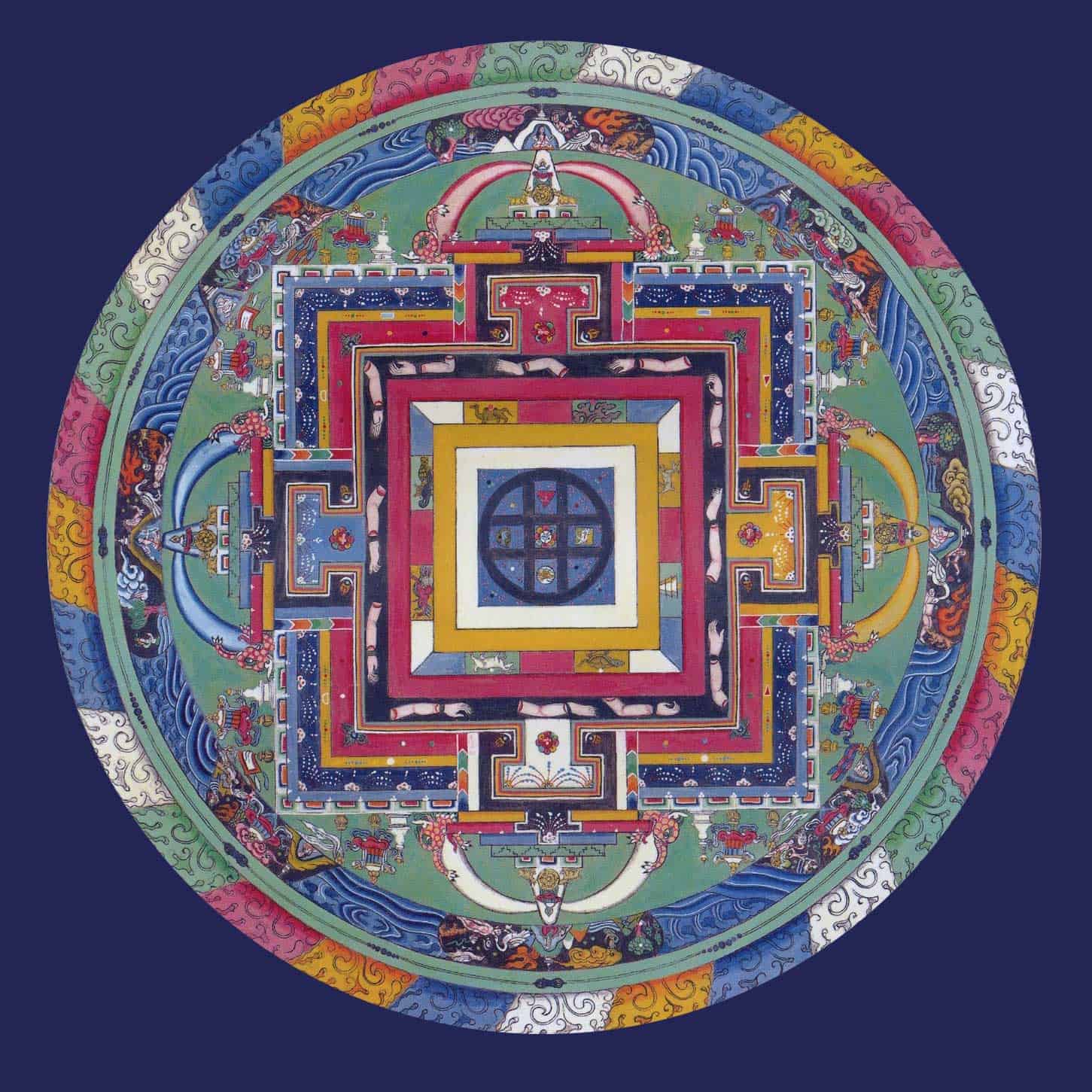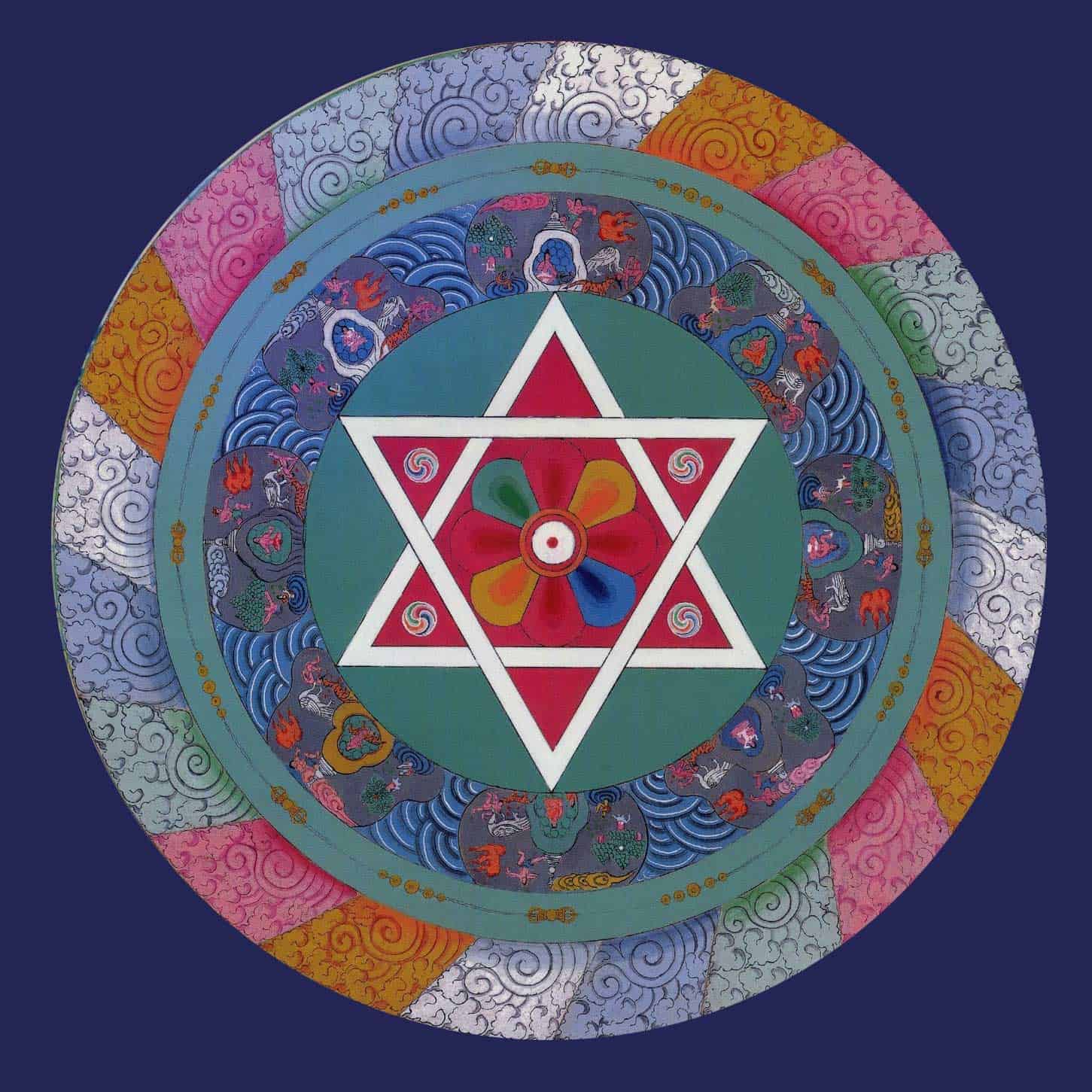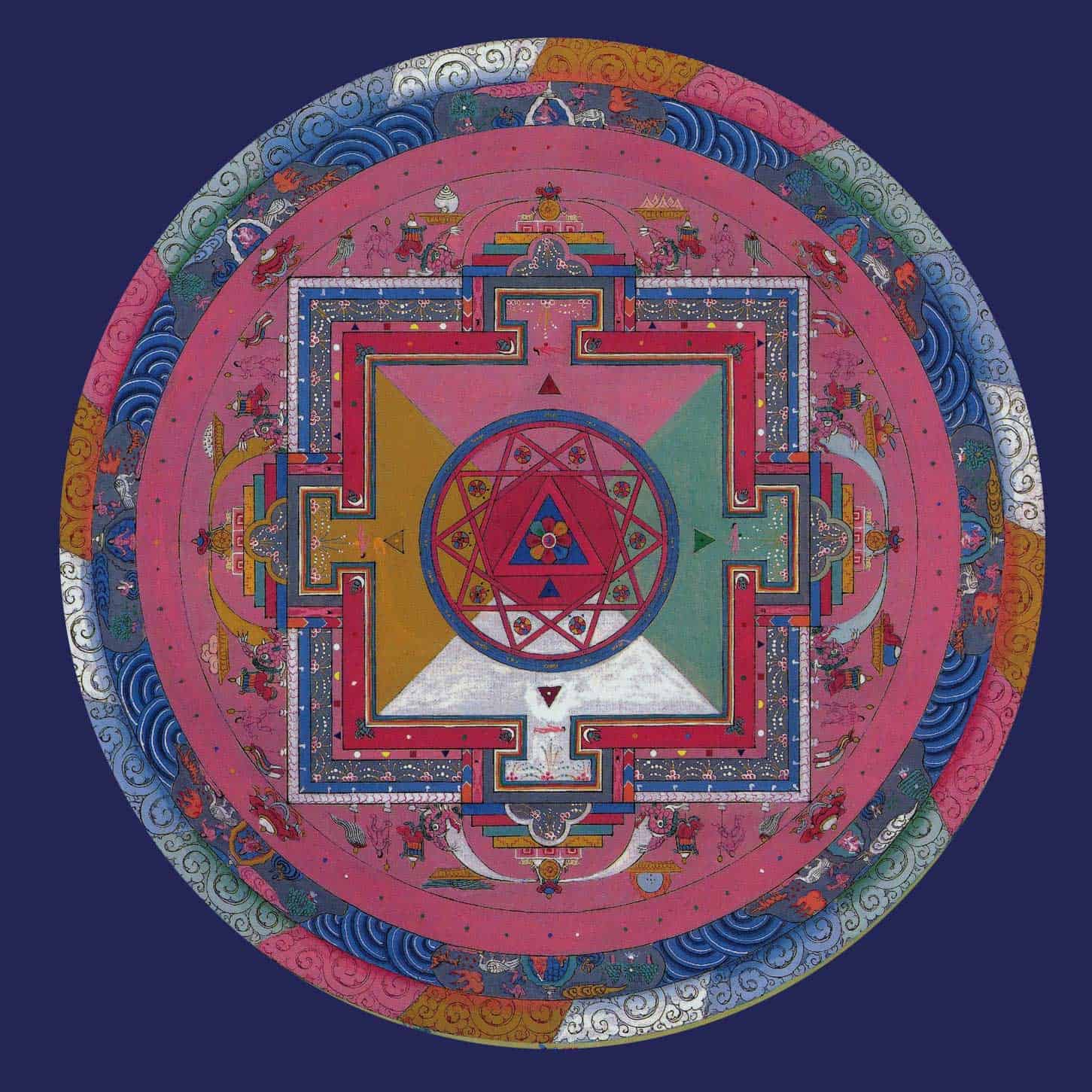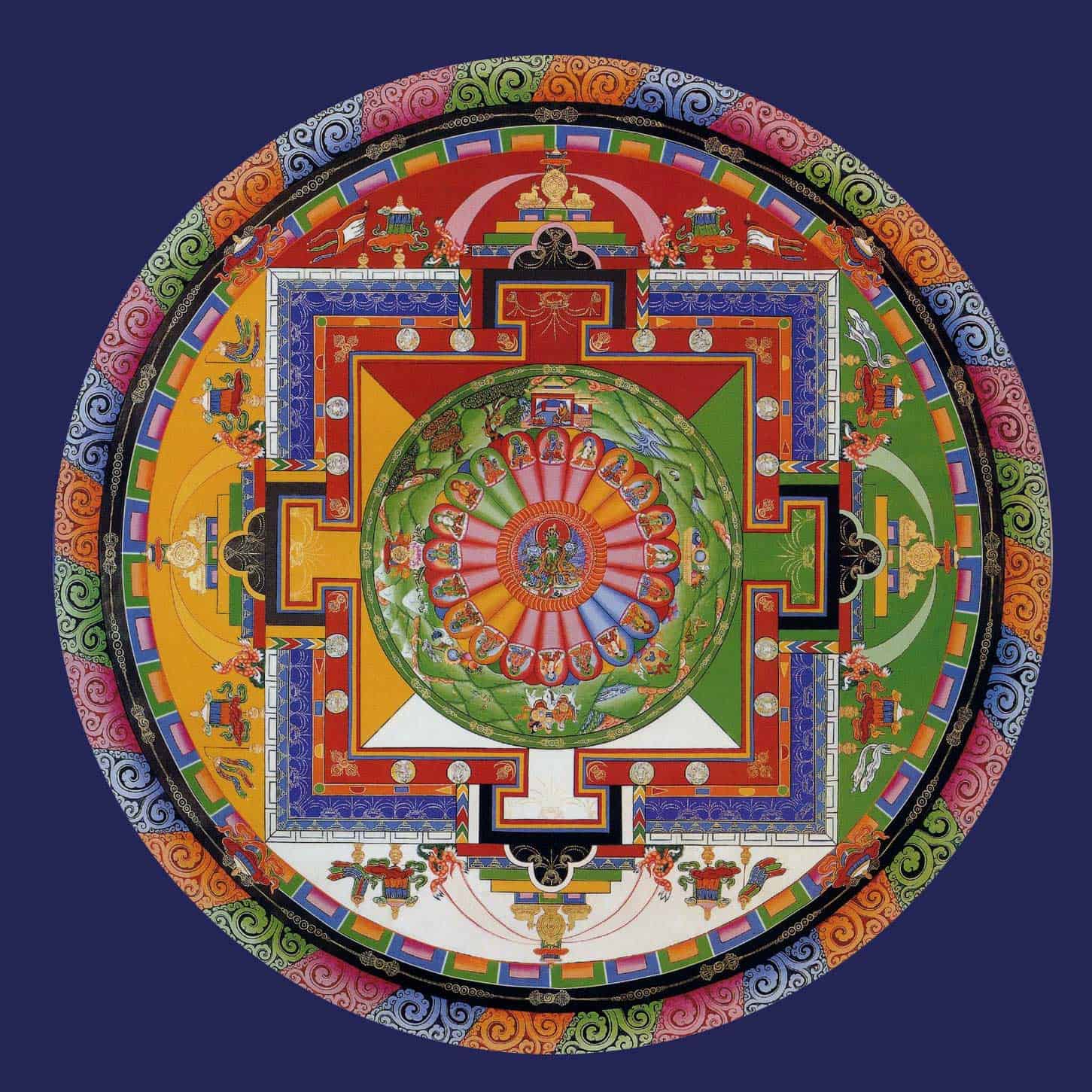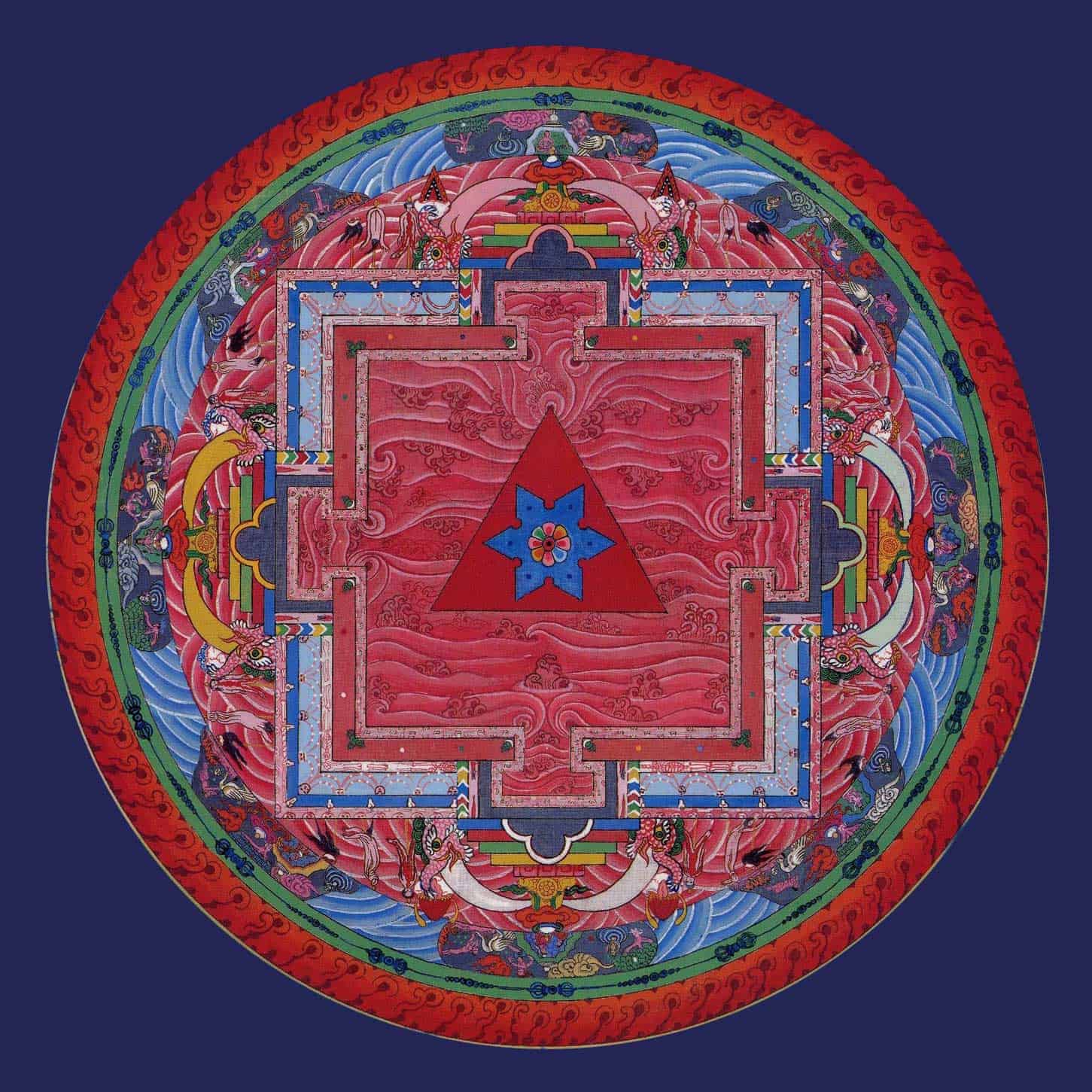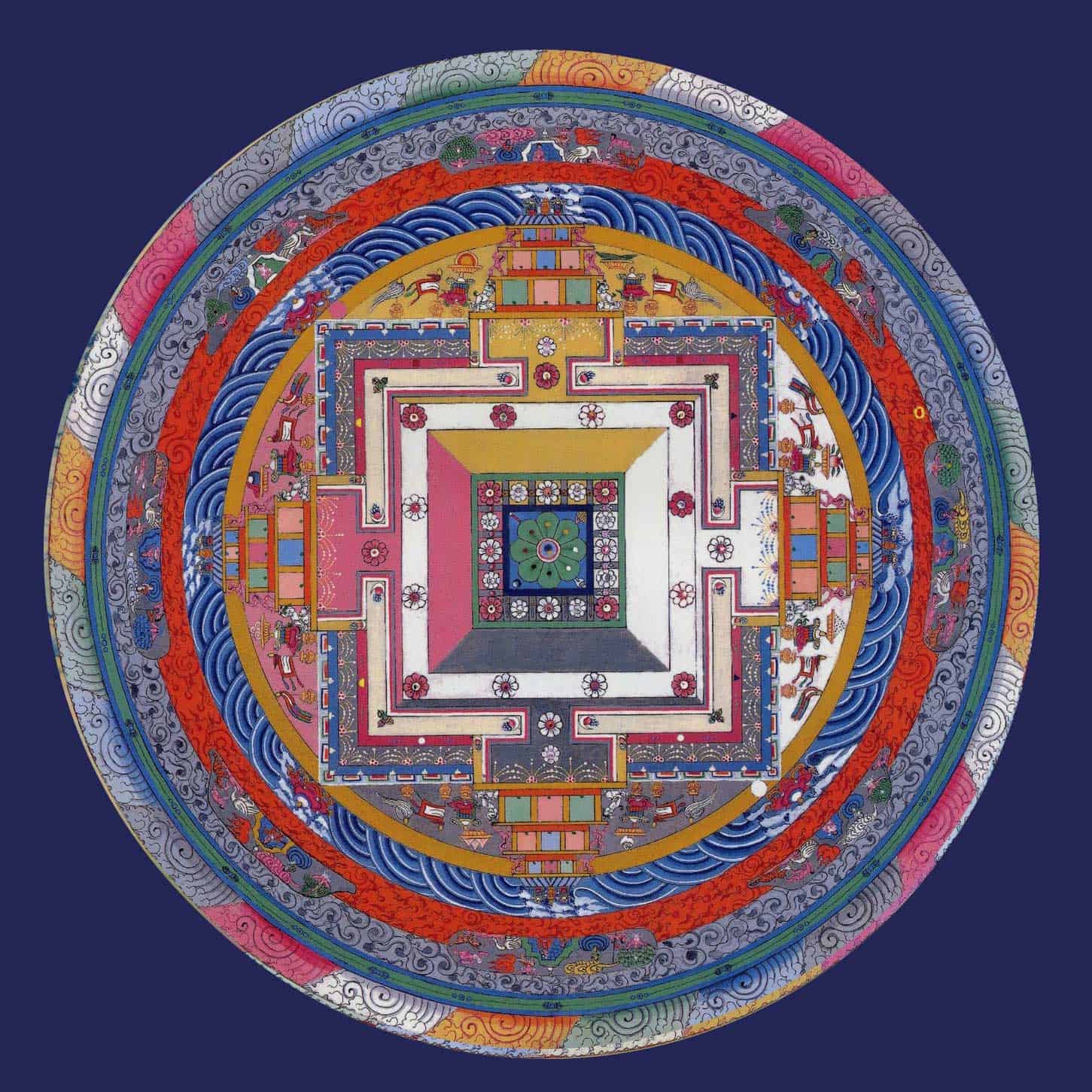Jonang Mandalas
A Sky full of Blessings of Buddhist Mandalas in the Kalachakra TempleJonang Mandala Project
We are extremely fortunate to showcase these mandalas in the Kalachakra Temple. The Mandalas come from Dzamthang Monastery, the seat of the Jonang lineage in Tibet. This the first place in the world outside of Tibet to showcase so many of the lineage mandalas. They includes the major highest yoga tantras and 4 variations of the Kalachakra Mandala. Some people may believe they are secret and not appropriate to show the mandalas everywhere anytime. However, at this time and in this era it’s time to educate people and make connections. From the 4 faces of the Kalachakra all tantra was taught. It says in the Kalachakra tantra, that by seeing the Mandala beings do not need to be reborn in the lower realms again. So just seeing these Mandalas will be an incredible blessing that leads to liberation.
Origin of the Mandalas
These 20 mandalas come form a collection of 68 Mandalas from the Jonang lineage teachings on the Ocean of Tantras, Gyu De Gyatso (rgyud sde rgya mtsho). The Mandalas are from Tashi Chöthang near Dzamthang. This is an important monastery for our lineage and Rinpoche’s root Guru Lama Lobsang Trinle. Khentrul Rinpoche wanted to highlight that the Jonang lineage holds more tantras then Kalachakra, containing oceans of wisdom in the lineage.
Details of the Mandalas
Many people believe that the Jonang Lineage just holds the Kalachakra teachings. While they focus on Kalachakra and are the only lineage to hold the completion stage practices, they also hold many other forms of Tantra. Connect with and learn about Buddhas, Deities and Bodhisattvas
Mahasamvara Kalachakra
This is a less common mandala of Kalachakra with a single story palace and 16 charnel grounds. As described by Taranatha, Mahasamvara Kalachakra stands in yab-yum with his consort on a multicolored lotus, adorned with sun, moon, rahu, and kalagni disks. The sixteen petals of the central lotus unfold into an infinite universe. This mandala invites us to transform ourselves through the purification of the 6 chakras.
Kalachakra
Chakrasamvara
Amitayus
Guyhasamaja Manjuvajra
Shakyamuni
Hevajra
Yamantaka
Manjushri Namasamgiti
Samaya Tara Yogini
vajra yogini
Vajrakila
21 Taras
Chakrasamvara
Chakrasamvara (Wheel of Great Bliss) stands with his consort Vajravarahi in the center of a palace of concentric levels with four gates. Rings of lotus petals and flames purify the enclosed space. Practitioners can use their attachment, passion and greed fused with bliss as a path for liberation.
Vajrapani
Mahakala
Hayagriva
Kalachakra
The Kalachakra Mandala shows the external universe, our internal universe, and the enlightened reality in a single image. The mandala reflects the entire path to enlightenment, from where we are at now to the state of a Buddha. Through the teachings of the Kalachakra we can not only transform ourselves but through this transform our world to a Golden Age of peace and harmony.
Akshobhya Mandala
Kalachakra
JOIN OUR NEWSLETTER!
Find out about our programs at Dzokden Kalapa

